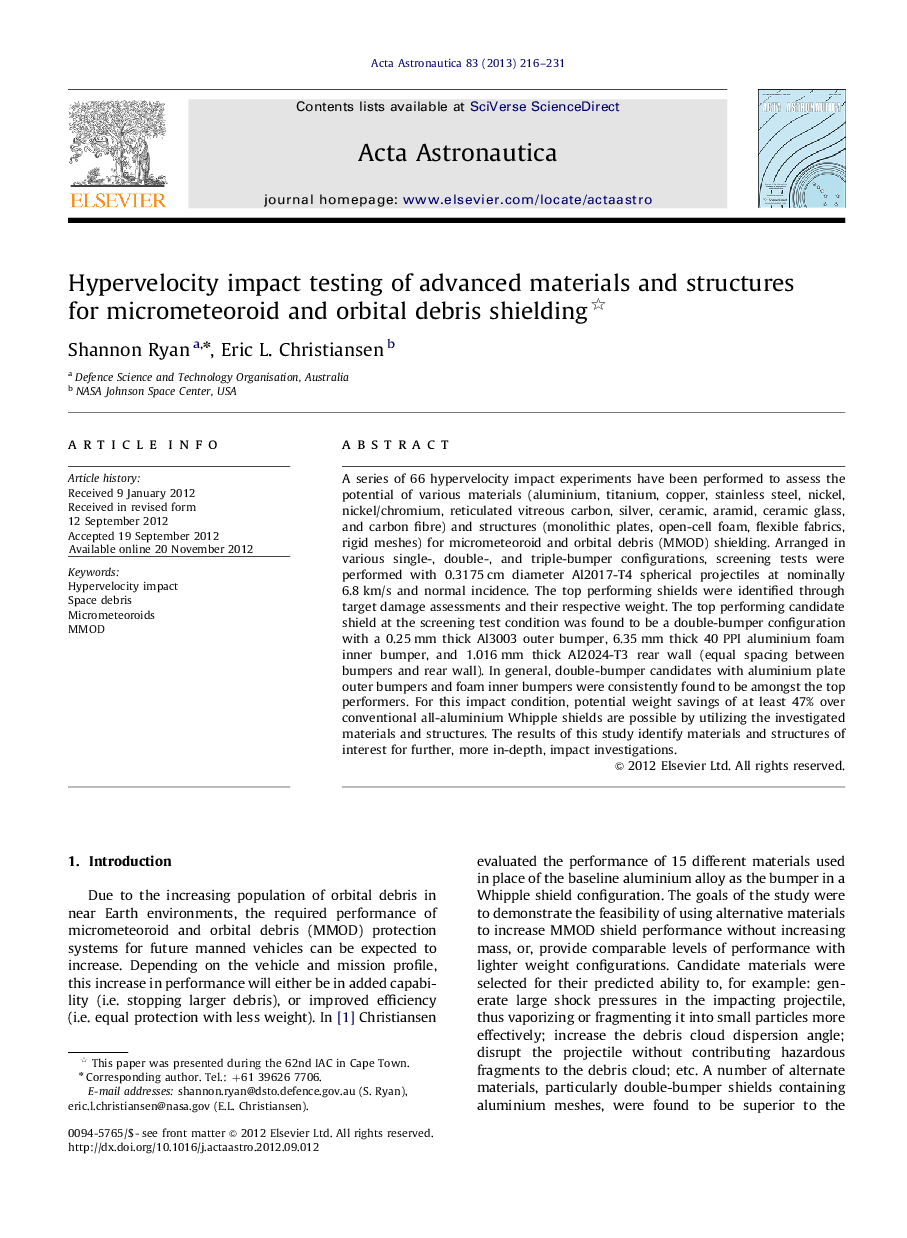| Article ID | Journal | Published Year | Pages | File Type |
|---|---|---|---|---|
| 1715103 | Acta Astronautica | 2013 | 16 Pages |
A series of 66 hypervelocity impact experiments have been performed to assess the potential of various materials (aluminium, titanium, copper, stainless steel, nickel, nickel/chromium, reticulated vitreous carbon, silver, ceramic, aramid, ceramic glass, and carbon fibre) and structures (monolithic plates, open-cell foam, flexible fabrics, rigid meshes) for micrometeoroid and orbital debris (MMOD) shielding. Arranged in various single-, double-, and triple-bumper configurations, screening tests were performed with 0.3175 cm diameter Al2017-T4 spherical projectiles at nominally 6.8 km/s and normal incidence. The top performing shields were identified through target damage assessments and their respective weight. The top performing candidate shield at the screening test condition was found to be a double-bumper configuration with a 0.25 mm thick Al3003 outer bumper, 6.35 mm thick 40 PPI aluminium foam inner bumper, and 1.016 mm thick Al2024-T3 rear wall (equal spacing between bumpers and rear wall). In general, double-bumper candidates with aluminium plate outer bumpers and foam inner bumpers were consistently found to be amongst the top performers. For this impact condition, potential weight savings of at least 47% over conventional all-aluminium Whipple shields are possible by utilizing the investigated materials and structures. The results of this study identify materials and structures of interest for further, more in-depth, impact investigations.
► Various advanced materials evaluated under hypervelocity impact. ► Focus on metal open-cell foams. ► Performance evaluated in 66 hypervelocity impact tests. ► Potential weight savings of over 47% achievable. ► Candidates with aluminium plate outer/foam inner bumpers consistently amongst top performers.
